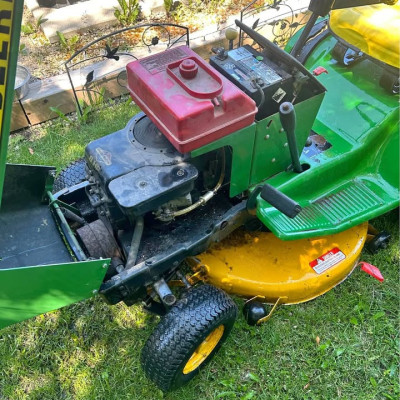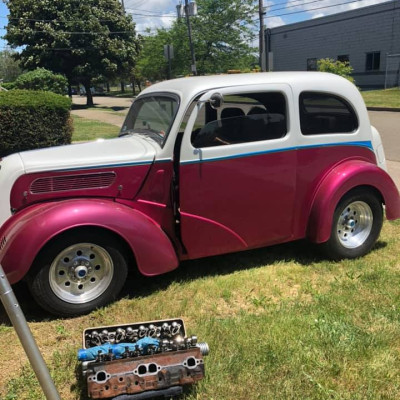11 Old Money Style Mistakes and How to Avoid Them
Old money style has long been associated with understated elegance, timelessness, and a refined approach to fashion that avoids the pitfalls of trends and ostentation. However, achieving that effortlessly sophisticated look isn’t always straightforward. Even those well-versed in classic style can make mistakes that detract from their intended appearance. Here’s a guide to the 11 most common old money style mistakes and how to avoid them.
1. Overemphasis on Logos
Mistake:
Old money style is characterized by subtlety and discretion. Wearing overtly branded clothing or accessories, with large, conspicuous logos, conflicts with this ethos. It can come off as flashy or insecure.
How to Avoid:
Choose garments and accessories from luxury brands that focus on quality and craftsmanship rather than branding. Opt for items that showcase a minimalist approach, where the quality speaks for itself without the need for visible logos.
2. Ignoring Fit and Tailoring
Mistake:
Clothing that doesn’t fit properly can undermine even the most carefully curated wardrobe. Ill-fitting clothes, whether too tight or too loose, can appear sloppy and detract from an overall polished look.
How to Avoid:
Invest in tailoring. Even off-the-rack items can look bespoke with the right adjustments. Ensure that suits, blazers, and dresses are tailored to your body, creating clean lines and enhancing your natural silhouette.
3. Choosing Trends Over Timeless Pieces
Mistake:
Old money style favors timelessness over fleeting trends. Focusing on the latest fashion trends can make your wardrobe look dated quickly and erode the classic, enduring quality of your style.
How to Avoid:
Build your wardrobe around classic pieces such as a well-fitted blazer, a trench coat, cashmere sweaters, and quality dress shirts. Invest in items that will remain stylish and relevant regardless of changing fashion trends.
4. Neglecting Proper Care of Clothes
Mistake:
Wearing high-quality garments is only part of the equation; proper care is essential. Neglecting maintenance, such as failing to dry clean a suit or not storing garments correctly, can lead to premature wear and tear.
How to Avoid:
Adopt a regimen for garment care that includes regular cleaning, appropriate storage, and careful handling. Learn about the care instructions for each fabric and follow them diligently to prolong the life of your clothes.
5. Excessive Accessories
Mistake:
Old money style is about subtlety, not about flaunting a multitude of accessories. Over-accessorizing can overwhelm your outfit and detract from the elegant simplicity that defines old money fashion.
How to Avoid:
Limit accessories to a few well-chosen items. For men, this might mean a classic watch and a pair of understated cufflinks. For women, opt for a simple necklace or a pair of elegant earrings. Ensure that your accessories complement rather than dominate your outfit.
6. Overly Trendy Footwear
Mistake:
Footwear is a crucial element of style, but old money style doesn’t align with overly trendy or flashy shoes. Bold colors, unusual designs, or excessive embellishments can look out of place.
How to Avoid:
Select footwear that embodies classic styles and high-quality craftsmanship. For men, leather oxfords or loafers are timeless choices. For women, consider leather pumps or ballet flats. Stick to neutral colors and traditional designs for a sophisticated look.
7. Inconsistent Color Schemes
Mistake:
Old money style thrives on harmony and coherence. Wearing clashing colors or overly bright hues can disrupt the refined aesthetic and make an outfit look disjointed.
How to Avoid:
Build a wardrobe with a cohesive color palette. Neutral colors such as navy, grey, beige, and white are foundational and versatile. Use these colors as a base and incorporate subtle variations to maintain an elegant, consistent look.
8. Misplacing the Balance Between Formal and Casual
Mistake:
Old money style involves a seamless blend of formal and casual elements. Wearing overly casual attire in formal settings or vice versa can disrupt the balance and seem out of place.
How to Avoid:
Understand the context of your attire. In formal settings, opt for classic suits and formal dress shoes. In casual settings, choose polished yet relaxed pieces such as chinos and a well-fitted polo shirt. Ensure that your outfit is appropriate for the occasion while maintaining an air of sophistication.
9. Poor Quality Fabrics
Mistake:
Old money style values the quality of materials. Wearing clothes made from cheap or synthetic fabrics can undermine the refined appearance you’re aiming for.
How to Avoid:
Invest in high-quality fabrics like wool, silk, cotton, and cashmere. These materials not only look better but also wear better over time. Prioritize natural fabrics that offer comfort and longevity.
10. Ignoring the Importance of Grooming
Mistake:
No matter how stylish your clothes are, poor grooming can spoil your overall look. Neglecting hair, nails, or personal hygiene can make even the most expensive outfit look unkempt.
How to Avoid:
Maintain a consistent grooming routine. This includes regular haircuts, well-trimmed nails, and appropriate skincare. Pay attention to small details such as keeping shoes polished and ensuring that your clothing is free from wrinkles or stains.
11. Forgetting to Personalize Your Look
Mistake:
Old money style is often mistaken for a lack of individuality. While it’s rooted in classic elements, it shouldn’t suppress your personal style. Overemphasizing uniformity can make your look appear generic.
How to Avoid:
Infuse your wardrobe with personal touches that reflect your taste and personality. This could be a distinctive tie, a family heirloom brooch, or a favorite scarf. Balancing classic elements with personal flair ensures that your style remains both timeless and uniquely yours.
Conclusion
Achieving old money style requires more than just wearing expensive clothes—it’s about embodying a sense of understated elegance and timeless sophistication. By avoiding these common mistakes and focusing on subtlety, quality, and personal expression, you can cultivate a look that resonates with classic grace and refined taste. Remember, old money style is not just about appearance but also about attitude, reflecting a lifestyle that values discretion, quality, and authenticity.






